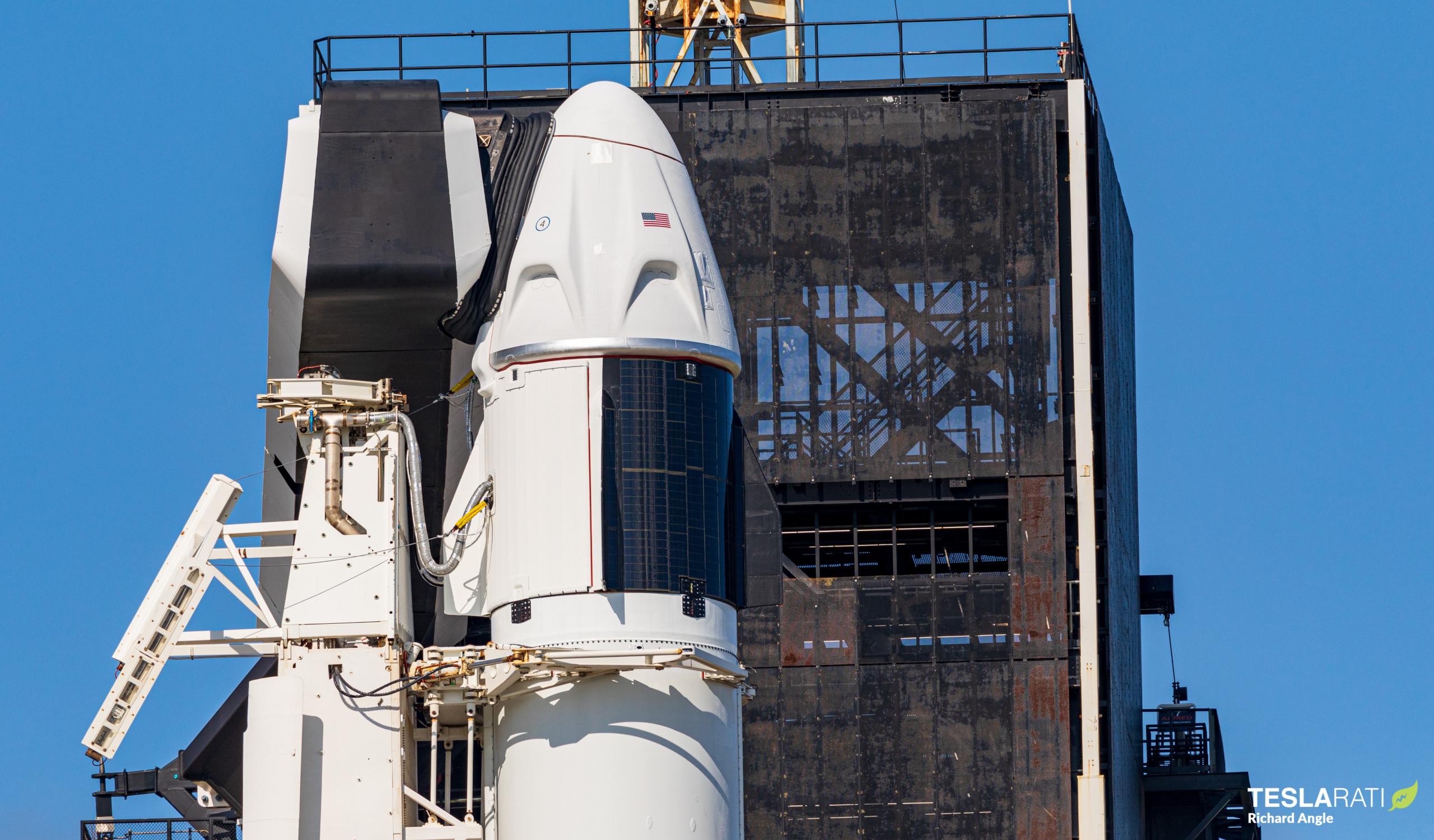
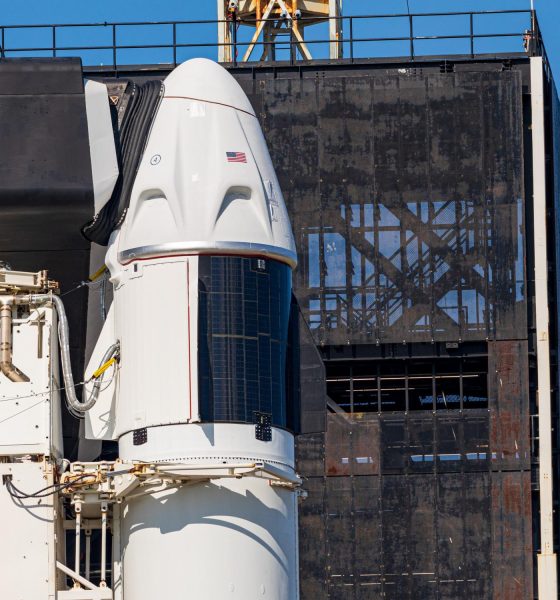
News
Watch SpaceX’s Inspiration4 mission launch four private astronauts live [webcast]
Update: SpaceX, Falcon 9, Crew Dragon, the crew, and the weather remain on track for the company’s historic Inspiration4 mission, which is set to become the first dedicated orbital space tourism launch in history.
SpaceX has begun more than four hours of live coverage for the mission, which remains on track to launch no earlier than just before 8:03 pm EDT (00:03 UTC). Tune in below to watch the launch live!
In less than 12 hours, SpaceX will kick off a more than four-hour webcast covering Crew Dragon’s historic Inspiration4 mission – set to be the world’s first all-private orbital astronaut launch and the highest private citizens have ever flown.
Safely tucked inside a once-flown orbital Dragon capsule and riding on a twice-flown Falcon 9 booster, the latter a first for SpaceX, Inspiration4’s approximately five-hour launch window is scheduled to open just before 8:03 pm EDT on Wednesday, September 15th (00:03 UTC 16 Sept). Barring weather or technical delays (or clouds in general), a liftoff ~35 minutes after sunset could produce spectacular views for anyone watching from the ground as Falcon 9 and its immense exhaust plume ascend back into sunlight.
No matter the view, though, Inspiration4 will be a milestone both for SpaceX, spaceflight, and orbital tourism as a whole.
The mission will both be SpaceX’s first private astronaut launch of any kind and the first all-private orbital astronaut launch in history. In a single mission, SpaceX will singlehandedly boost the number of private astronauts that have reached orbit by 50% – a feat only eight other people have achieved. If all goes according to plan, it will also be the first time ever that private citizens have successfully flown to orbit and back on or in a flight-proven rocket or flight-proven spacecraft.
According to SpaceX, Falcon 9 will launch Crew Dragon to an apogee of around 575 km (~357 mi) – more than a third higher than the ISS, the highest humans have flown since 2009, and the highest altitude ever reached by private astronauts. With Inspiration4, SpaceX will also launch astronauts on a twice-flown Falcon 9 booster and simultaneously operate three Dragon spacecraft in orbit for the first time ever, pushing the company’s own technical abilities forward.
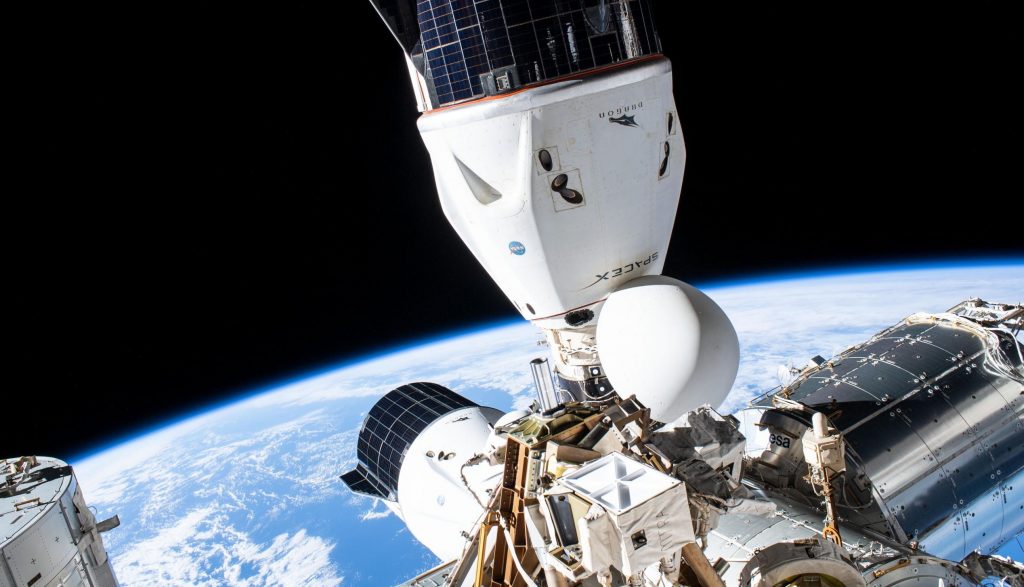
Despite the myriad impressive firsts Inspiration4 is set to mark, one thing is certain: it won’t be the last time private astronauts head to (real) space on a SpaceX spacecraft. Already, SpaceX has contracts from Axiom Space for four dedicated private launches to the International Space Station in 2022 and 2023, each carrying up to four private astronauts. Space Adventures – responsible for organizing all eight other non-SpaceX private orbital astronaut launches in history – also has plans to launch a private crew of four to unprecedented heights, though it’s unclear if the mission has secured any customers.
I asked about future non-government missions for SpaceX:
Reed says “the Dragon manifest is getting busier by the minute” with “a growing backlog of commercial astronaut missions.”— Michael Sheetz (@thesheetztweetz) September 14, 2021
Reed says SpaceX is “gearing up” to be able to fly 4-6 Dragon missions per year at minimum.— Michael Sheetz (@thesheetztweetz) September 14, 2021
In an official Q&A held on Tuesday, Benji Reed – SpaceX director of Dragon mission management – said that the company’s “Dragon manifest is getting busier by the minute” with “a growing backlog of commercial astronaut mission.” Reed also expects SpaceX to soon be capable of a minimum of 4-6 Dragon launches annually. Axiom-1, the first fully private astronaut mission to the International Space Station (ISS), is scheduled to launch no earlier than January 2022.
As for Inspiration4, Jared Isaacman, Sian Proctor, Haley Arceneaux, and Chris Sembroski will spend a bit less than three days in orbit and are expected to perform a few small science experiments, take plenty of photos, and host a couple live events over the course of the mission. They’ll also get to take advantage of Crew Dragon’s ‘cupola’ – designed specifically by SpaceX for Inspiration4 and set to be the largest window ever flown in space. A small camera inside the nosecone that will protect that window during ascent and reentry will hopefully allow the crew to take self-portraits with Earth as a spectacular backdrop.
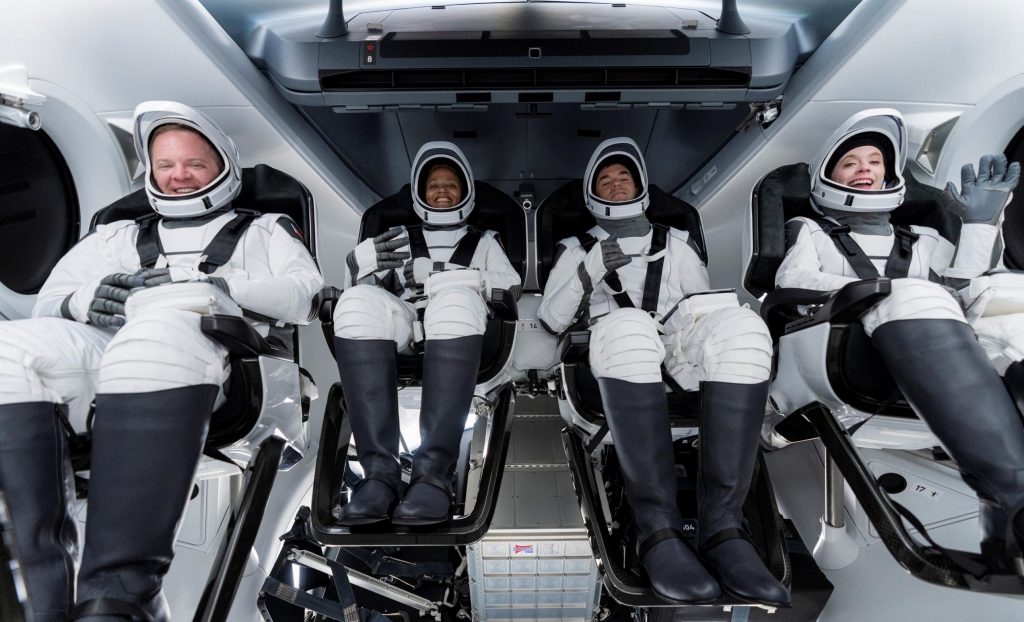
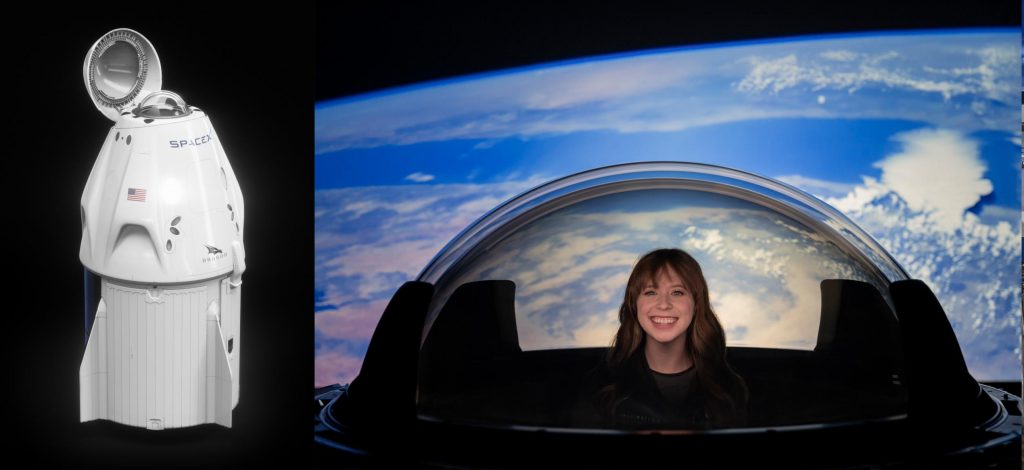
If all goes according to plan, Dragon will reenter and return its private astronauts to Earth around 7pm EDT on Saturday, September 18th. SpaceX is expected to provide live coverage of Inspiration4’s launch and reentry and the launch webcast will begin around 4pm EDT (20:00 UTC), four hours before liftoff.

News
Tesla FSD fleet is nearing 7 billion total miles, including 2.5 billion city miles
As can be seen on Tesla’s official FSD webpage, vehicles equipped with the system have now navigated over 6.99 billion miles.

Tesla’s Full Self-Driving (Supervised) fleet is closing in on almost 7 billion total miles driven, as per data posted by the company on its official FSD webpage.
These figures hint at the massive scale of data fueling Tesla’s rapid FSD improvements, which have been quite notable as of late.
FSD mileage milestones
As can be seen on Tesla’s official FSD webpage, vehicles equipped with the system have now navigated over 6.99 billion miles. Tesla owner and avid FSD tester Whole Mars Catalog also shared a screenshot indicating that from the nearly 7 billion miles traveled by the FSD fleet, more than 2.5 billion miles were driven inside cities.
City miles are particularly valuable for complex urban scenarios like unprotected turns, pedestrian interactions, and traffic lights. This is also the difference-maker for FSD, as only complex solutions, such as Waymo’s self-driving taxis, operate similarly on inner-city streets. And even then, incidents such as the San Francisco blackouts have proven challenging for sensor-rich vehicles like Waymos.
Tesla’s data edge
Tesla has a number of advantages in the autonomous vehicle sector, one of which is the size of its fleet and the number of vehicles training FSD on real-world roads. Tesla’s nearly 7 billion FSD miles then allow the company to roll out updates that make its vehicles behave like they are being driven by experienced drivers, even if they are operating on their own.
So notable are Tesla’s improvements to FSD that NVIDIA Director of Robotics Jim Fan, after experiencing FSD v14, noted that the system is the first AI that passes what he described as a “Physical Turing Test.”
“Despite knowing exactly how robot learning works, I still find it magical watching the steering wheel turn by itself. First it feels surreal, next it becomes routine. Then, like the smartphone, taking it away actively hurts. This is how humanity gets rewired and glued to god-like technologies,” Fan wrote in a post on X.
News
Tesla starts showing how FSD will change lives in Europe
Local officials tested the system on narrow country roads and were impressed by FSD’s smooth, human-like driving, with some calling the service a game-changer for everyday life in areas that are far from urban centers.

Tesla has launched Europe’s first public shuttle service using Full Self-Driving (Supervised) in the rural Eifelkreis Bitburg-Prüm region of Germany, demonstrating how the technology can restore independence and mobility for people who struggle with limited transport options.
Local officials tested the system on narrow country roads and were impressed by FSD’s smooth, human-like driving, with some calling the service a game-changer for everyday life in areas that are far from urban centers.
Officials see real impact on rural residents
Arzfeld Mayor Johannes Kuhl and District Administrator Andreas Kruppert personally tested the Tesla shuttle service. This allowed them to see just how well FSD navigated winding lanes and rural roads confidently. Kruppert said, “Autonomous driving sounds like science fiction to many, but we simply see here that it works totally well in rural regions too.” Kuhl, for his part, also noted that FSD “feels like a very experienced driver.”
The pilot complements the area’s “Citizen Bus” program, which provides on-demand rides for elderly residents who can no longer drive themselves. Tesla Europe shared a video of a demonstration of the service, highlighting how FSD gives people their freedom back, even in places where public transport is not as prevalent.
What the Ministry for Economic Affairs and Transport says
Rhineland-Palatinate’s Minister Daniela Schmitt supported the project, praising the collaboration that made this “first of its kind in Europe” possible. As per the ministry, the rural rollout for the service shows FSD’s potential beyond major cities, and it delivers tangible benefits like grocery runs, doctor visits, and social connections for isolated residents.
“Reliable and flexible mobility is especially vital in rural areas. With the launch of a shuttle service using self-driving vehicles (FSD supervised) by Tesla in the Eifelkreis Bitburg-Prüm, an innovative pilot project is now getting underway that complements local community bus services. It is the first project of its kind in Europe.
“The result is a real gain for rural mobility: greater accessibility, more flexibility and tangible benefits for everyday life. A strong signal for innovation, cooperation and future-oriented mobility beyond urban centers,” the ministry wrote in a LinkedIn post.
News
Tesla China quietly posts Robotaxi-related job listing
Tesla China is currently seeking a Low Voltage Electrical Engineer to work on circuit board design for the company’s autonomous vehicles.

Tesla has posted a new job listing in Shanghai explicitly tied to its Robotaxi program, fueling speculation that the company is preparing to launch its dedicated autonomous ride-hailing service in China.
As noted in the listing, Tesla China is currently seeking a Low Voltage Electrical Engineer to work on circuit board design for the company’s autonomous vehicles.
Robotaxi-specific role
The listing, which was shared on social media platform X by industry watcher @tslaming, suggested that Tesla China is looking to fill the role urgently. The job listing itself specifically mentions that the person hired for the role will be working on the Low Voltage Hardware team, which would design the circuit boards that would serve as the nervous system of the Robotaxi.
Key tasks for the role, as indicated in the job listing, include collaboration with PCB layout, firmware, mechanical, program management, and validation teams, among other responsibilities. The role is based in Shanghai.
China Robotaxi launch
China represents a massive potential market for robotaxis, with its dense urban centers and supportive policies in select cities. Tesla has limited permission to roll out FSD in the country, though despite this, its vehicles have been hailed as among the best in the market when it comes to autonomous features. So far, at least, it appears that China supports Tesla’s FSD and Robotaxi rollout.
This was hinted at in November, when Tesla brought the Cybercab to the 8th China International Import Expo (CIIE) in Shanghai, marking the first time that the autonomous two-seater was brought to the Asia-Pacific region. The vehicle, despite not having a release date in China, received a significant amount of interest among the event’s attendees.








